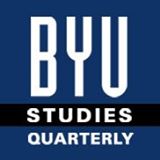BYU Studies

Abstract
From the earliest centuries of Christianity, the issue of the scriptural canon has been a vexed one. Jewish rabbis met at the Council of Jamniah to establish the Hebrew canon, but not until the Council of Florence in 1440 did the Roman Catholic Church designate the twenty-seven books of the New Testament as canonical. Even then, the authority of the Apocrypha remained contested, and when Martin Luther translated biblical texts into German, he shuttled four books (Hebrews, James, Jude, and Revelation) to the end of the New Testament, deeming them less suitable for inclusion in the biblical canon.
Such canonical fluidity, according to David F. Holland, a historian formerly at the University of Nevada, Las Vegas, and now at Harvard Divinity School, effectively eroded what he calls the "canonical border" in the colonial period and the early republic. "After humanistic and democratic revolutions--in both politics and theology--the sovereignty of God and the dangers of spiritual tyranny," he writes, "seemed to lose some of the threatening resonance they had in the mid-seventeenth century" (212).
Recommended Citation
Holland, David F. and Balmer, Randall
(2014)
"Sacred Borders: Continuing Revelation and Canonical Restraint in Early America,"
BYU Studies: Vol. 53:
Iss.
1, Article 13.
Available at:
https://scholarsarchive.byu.edu/byusq/vol53/iss1/13
